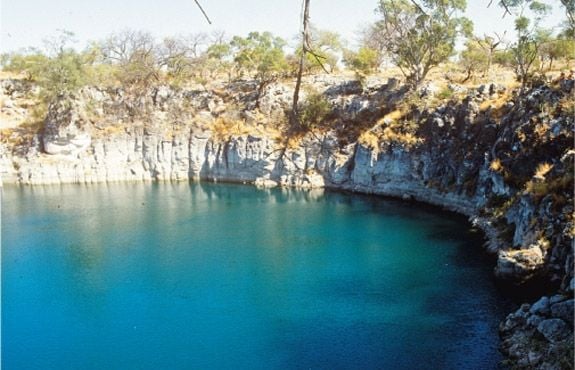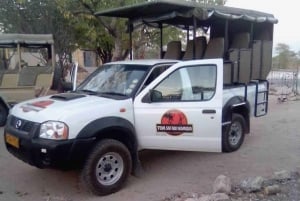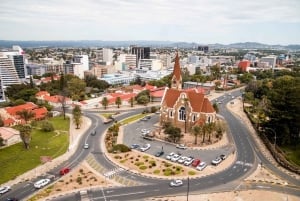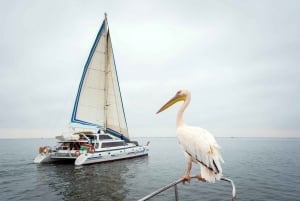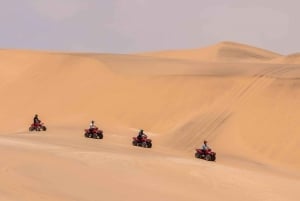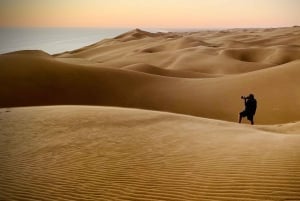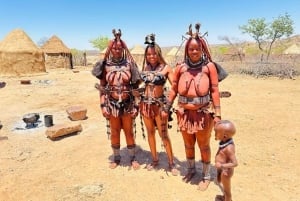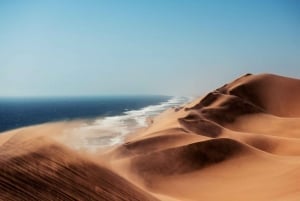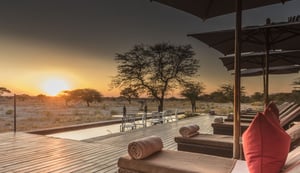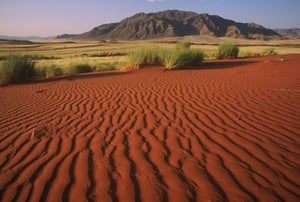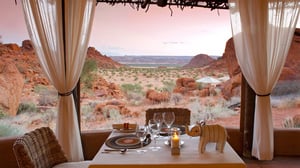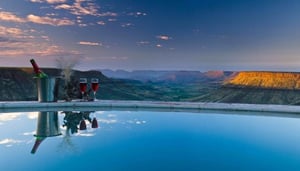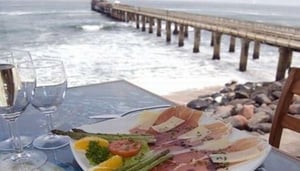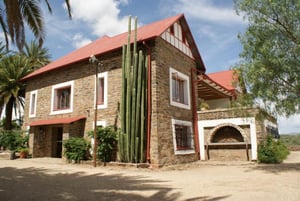Lake otjikoto
Exploring Lake Otjikoto: Namibia's Mysterious Sinkhole Lake
Book Top Experiences and Tours in Namibia:
If youʻre booking your trip to Namibia last minute, we have you covered. Below are some of the top tours and experiences!- Etosha National Park: Full or Half-Day Game Drive
- Windhoek: City and Township Tour
- Walvis Bay: Marine Big 5 Luxury Catamaran Tour
- Swakopmund: Desert Dunes Quad Biking with Optional Sandboard
- Walvis Bay: Sandwich Harbour Sunset Tour
Geological Origins and Formation
Lake Otjikoto is a sinkhole lake, formed by the collapse of a limestone cave in the karst region of Namibia. This geological process created a nearly circular lake with a surface diameter of approximately 102 meters. Despite its modest surface area, the lake is remarkably deep, reaching depths of over 140 meters in some places. The name "Otjikoto" comes from the Otjiherero language, meaning "deep hole." This perfectly describes the lake's mysterious and seemingly bottomless depths, which have fascinated locals and explorers for centuries.
Historical Significance
Lake Otjikoto is steeped in historical intrigue. During World War I, as German forces retreated from advancing South African troops, they dumped large quantities of military equipment and weapons into the lake to prevent them from falling into enemy hands. This submerged treasure trove includes rifles, cannons, and ammunition.
Some artifacts have been recovered and are on display at the Tsumeb Museum, but much of the military cache remains hidden beneath the lake's surface. This historical connection makes Lake Otjikoto a site of ongoing archaeological interest.
Activities and Attractions
Visitors to Lake Otjikoto can enjoy a variety of activities that showcase its natural beauty and historical depth:
Sightseeing and Photography: The lake's emerald-green waters, framed by rugged limestone cliffs, create a picturesque setting perfect for photography.
Historical Exploration: Learn about the lake's role in World War I and view recovered artifacts at the nearby Tsumeb Museum.
Scuba Diving: For certified divers, Lake Otjikoto offers a rare opportunity to explore its underwater world. Divers can see remnants of the sunken military equipment and experience the lake's eerie, otherworldly depths.
Nature Observation: The area around the lake is home to diverse flora and fauna, including bird species that thrive in this unique ecosystem.
Getting to Lake Otjikoto
Lake Otjikoto is conveniently located about 20 kilometers northwest of Tsumeb, along the B1 highway. This accessibility makes it an easy stop for travelers exploring northern Namibia, including those en route to Etosha National Park. Visitors can drive to the lake via well-maintained roads, and the site has designated viewing areas for those wishing to admire the scenery without venturing into the water.
Best Time to Visit
The best time to visit Lake Otjikoto is during the dry season, from May to October, when the weather is cooler and road conditions are optimal. During this period, the lake's water level remains stable, providing the best views of its striking green surface.
Conservation and Cultural Importance
Lake Otjikoto is not only a natural and historical landmark but also holds cultural significance for local communities. It is considered a sacred site by some indigenous groups, and efforts are made to preserve its ecological and cultural heritage.
As part of Namibia's environmental conservation efforts, visitors are encouraged to respect the lake's natural beauty and avoid activities that could disrupt its fragile ecosystem.
Accommodation Near Lake Otjikoto
Tsumeb, the nearest town, offers a range of accommodation options to suit various budgets. From comfortable lodges and guesthouses to more rustic camping facilities, visitors can find suitable lodging while exploring the area.
Popular choices include:
Kupferquelle Resort: A modern, family-friendly lodge with amenities like a swimming pool and restaurant.
Minen Hotel: A historic hotel offering cozy accommodations and a convenient location in Tsumeb.
Camping Sites: For more adventurous travelers, several campsites around Tsumeb provide a closer connection to nature.
Why Visit Lake Otjikoto?
Lake Otjikoto is a fascinating blend of natural wonder and historical mystery. Its unique geological origins, wartime legacy, and serene beauty make it a must-see destination for anyone exploring Namibia. Whether you're diving into its depths, learning about its past, or simply soaking in the scenic views, Lake Otjikoto promises a memorable and enriching experience.
Add Lake Otjikoto to your Namibian travel itinerary and uncover the secrets hidden within its deep, emerald waters.
